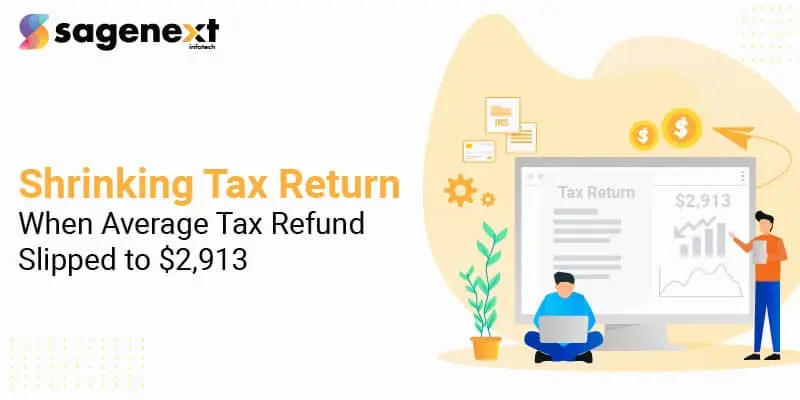
Shrinking Tax Return: When Average Tax Refund Slipped to $2,913
According to the IRS, in the year 2011, the average tax refund was $2913. In that year, the United States handed out fewer tax refunds, as well as the amount of each refund, was smaller. There was a fall of $100 in that year according to the sources of a consumer banking and credit information website.
After this incident, the citizens needed to be sure of the tax return history. Before I tell you more about this 2011 incident where there was a shrink in the tax return, let me ask you a few questions:
- Do you have the information about your tax return history?
- In the past few years, was there a growth in your tax liability or got smaller?
- If there was a growth or shrink in the tax liability then what was the reason?

Ned Handy, President Citizens Bank, and RBS Citizens, Rhode Island had said, “It is very tempting to think of your refund as a windfall and to spend it quickly. But the extra money also creates a natural opportunity for consumers to weigh how it can be used to address their short-, medium- and long-term financial goals.” The economy had confusing details and it was the best time to understand the way of how and why income is taxed in a certain manner.
History of the Average U.S. Tax Refund
In the year 2011, the refunds that the taxpayers received averaged $2,913 which was 3% less from the average refund in the year 2010. In the year 2010, the average refund was $3,003 according to the filing stats that were released by the IRS. If you look down the tax refunds of the years prior to 2011, it was:
- Year 2007: $2,699
- Year 2008: $2,728
- Year 2009: $3,306
- Year 2010: $3,003
- Year 2011: $2,913

There was a total of $109.3 million refunds that year which added up to a total of $318.5 billion. There was a slight fall from 2010 in which $109.4 million refunds were delivered which totaled the amount of $328.4 billion.
How To Save and Spend a Tax Refund?
As you already know about the tax refund issues that might come up, now let us look at the ideas that you can use for saving and spending tax refunds every year:
Reduce Debt:
You can use the extra money to reduce the outstanding debt like credit cards. You can try to repay the balances that have the highest interest rates first as they take away most of your money and do shake your budget.
Home Savings:
The same money can be used for remodeling or repairing of the house. Getting rid of the home maintenance thing before it gets costly and critical is a smart move. With this, there comes an increase in the value of your house.
Emergency Fund:
No matter what your financial situation is, it is always a good idea to have an emergency fund which can help you in the unexpected emergencies. The emergencies could be medical bills or the loss of a job. It is better to have funds for six to nine months worth of expenses that come out of living in such emergencies.
Educational Savings:
Some of the young people might think of this to be too much future-oriented but starting early to save for the educational purpose of your children is not a bad idea. There are banks that come up with special offers that can help parents get an early start on savings for their schools and colleges.
Conclusion
After knowing the facts, figures, and the repercussions of tax refunds you might start looking at the return of the previous year for seeing where you stand right now. Even if you are interested in doing that, it is always important to keep records of such information. You can use tax software to make things easier than ever for storing and processing the financial tax data.
Every person at some point might need a copy of an old tax return but they fail to find it or do not have records of their own. There are three really easy and flexible ways for getting the tax return and account transcript from the IRS. It could be on the web, using a phone, or through email.







